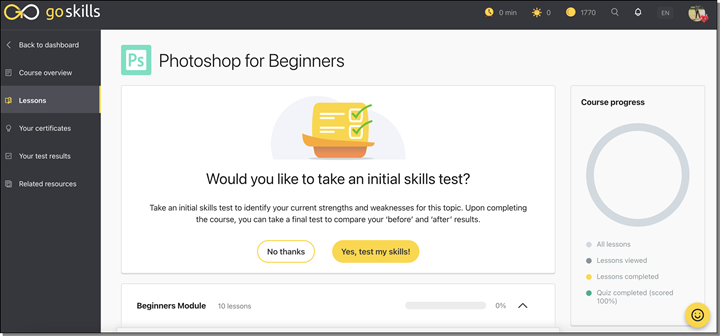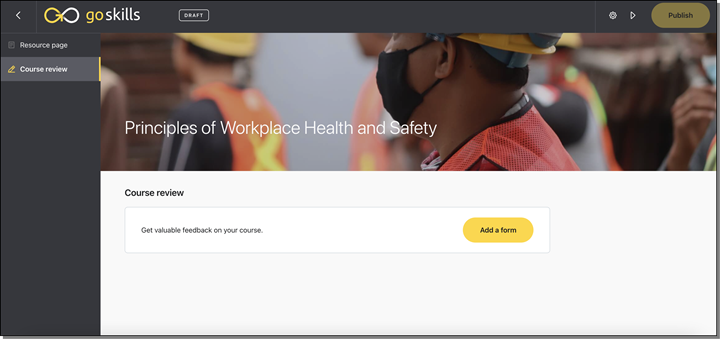Effective employee onboarding reduces turnover and ensures new hires become productive as quickly as possible. While it may be tempting to minimize training time, research shows that poorly structured onboarding can be a costly mistake. Consider:
- New employees contribute little to profitability in their first three months(1)
- Inadequate training results in billions of dollars in lost productivity each year(2)
- 1 in 4 employees quit within 90 days, often due to ineffective onboarding. Companies that invest in structured orientation programs see retention rates increase by 50%(3)
- 76% of employees rank on-the-job training as the most valuable part of their onboarding experience(3)

The above statistics highlight why onboarding best practices are essential for reducing turnover and maximizing productivity. Without a structured approach, new employees struggle to contribute effectively, leading to costly inefficiencies and early resignations.
In contrast, companies that invest in well-planned onboarding strategies—such as structured training, clear expectations, and on-the-job learning—see higher retention rates and better overall performance. Implementing the following onboarding tips will ensure that new hires feel prepared, engaged, and positioned for long-term success.
8 essential onboarding tips
An effective onboarding process helps new hires acclimate faster, cutting training time while boosting employee retention. Apply these onboarding tips to set your new team members up for long-term success.
1. Test new hires
Find out what your new hire already knows so you can determine what you still need to teach them. Use evaluation tests to assess a new hire’s prior knowledge and identify areas of strength and weakness. Once you identify the holes in their knowledge, you can skip the parts they already understand and tailor the rest of their training to meet their learning needs as efficiently as possible.
GoSkills courses give learners the option of taking a placement test before commencing a course. This sorts the course lessons into areas of strength, weakness, and refresher so that you can easily see exactly how much an employee already knows about a given topic.

2. Have a customized plan
A customized plan for every employee may seem time-consuming, but it will save time in the long run because it will result in training that works for the employee. Decide what’s essential for them to know upfront, like Excel, customer service or team leadership, and let the rest be part of their ongoing employee development.
The GoSkills Training Platform makes it easy to customize learning for every employee. You can easily create groups and assign specific courses to them. For example, you could create a new group named “Office Administration onboarding”, and assign Excel and Microsoft Word courses only to learners in that group.
3. Partner with new employees
Employees should know that the end of the formal onboarding period is not the end of their training and development. Communicate your development plans for them and allow them to be active participants in the planning process. They’ll be more engaged and more likely to take the training seriously.
4. Deploy self-paced learning
Training employees one-on-one is time-consuming, and training them in a group can mean that everyone is stuck learning at the same pace. E-learning can help make training more efficient by allowing new employees to access classes when and where they choose. They can do this individually or in a group setting, but still, have the advantage of going at their own pace. This also takes the burden of training off of staff members and puts it in the hands of experts.
With the GoSkills LMS, you can create your own custom onboarding course that every new employee takes when they get hired. As part of the course, you can even test their knowledge with quizzes and exercises if you choose. This really helps to simplify your onboarding flow and quickly get everyone up to speed.
5. Establish fundamentals
Sometimes you need to provide training, particularly for talented young people who are new to the professional workplace — interns, apprentices, and new graduates. Engaging online courses in foundational skills can help these emerging professionals set the groundwork for more job-specific training down the line. Placement tests and quizzes mean your new employees all get the basics that they need but don’t waste time learning things they already know.
6. Assign a mentor
During training and onboarding, new hires often think of questions they feel are too small or silly to bring to their manager. However, these gaps in knowledge make it harder for employees to get up to speed. A same-level mentor will more efficiently help the employee get the lay of the land and answer any questions that arise.
7. Include job shadowing
Employees can job-shadow that same mentor to get a first-hand look at what day-to-day work entails. Instead of jumping into the deep end, the new employee gets a gradual transition into the new work and can ask questions as they arise.
8. Give and get feedback
Monitor employee progress throughout their training and provide a mechanism for them to provide feedback every step of the way. It’s more efficient to catch training gaps as they arise than to wait until the sixth month or yearly review. Knowing what worked for your employee and what didn’t means you can continuously improve training.
The GoSkills LMS gives you access to easy-to-understand reporting and analytics for your employees, so you can monitor their progress at a glance.

Take the pain out of onboarding
Are you ready to start reducing your employee onboarding time?
The GoSkills LMS makes it easy to onboard new employees. You can easily create groups, assign GoSkills courses or create your own, and monitor progress at a glance with easy-to-understand reporting and analytics.
Try the GoSkills Training Platform for free today and help your new hires get up in running in record time.
Footnotes
- Michael D. Watkins, 'The First 90 Days'. Harvard Business Review Press, May 14, 2013. https://hbr.org/resources/pdfs/chapters/the-first-90-days-updated-and-expanded.pdf, (accessed 21 April, 2025).
- HR.com, '$37 billion - US and UK businesses count the cost of employee misunderstanding'. June 2008. https://www.hr.com/en/communities/staffing_and_recruitment/37-billion---us-and-uk-businesses-count-the-cost-o_fhnduq4d.html, (accessed 21 April, 2025).
- Aberdeen.com, 'Perfecting the Onboarding Funnel'. Sept. 22, 2016. https://www.aberdeen.com/blogposts/perfecting-onboarding-funnel/, (accessed 21 April, 2025).
A better way to train
It's easier than ever to create, track, and manage team training with the GoSkills LMS.
Start for free



